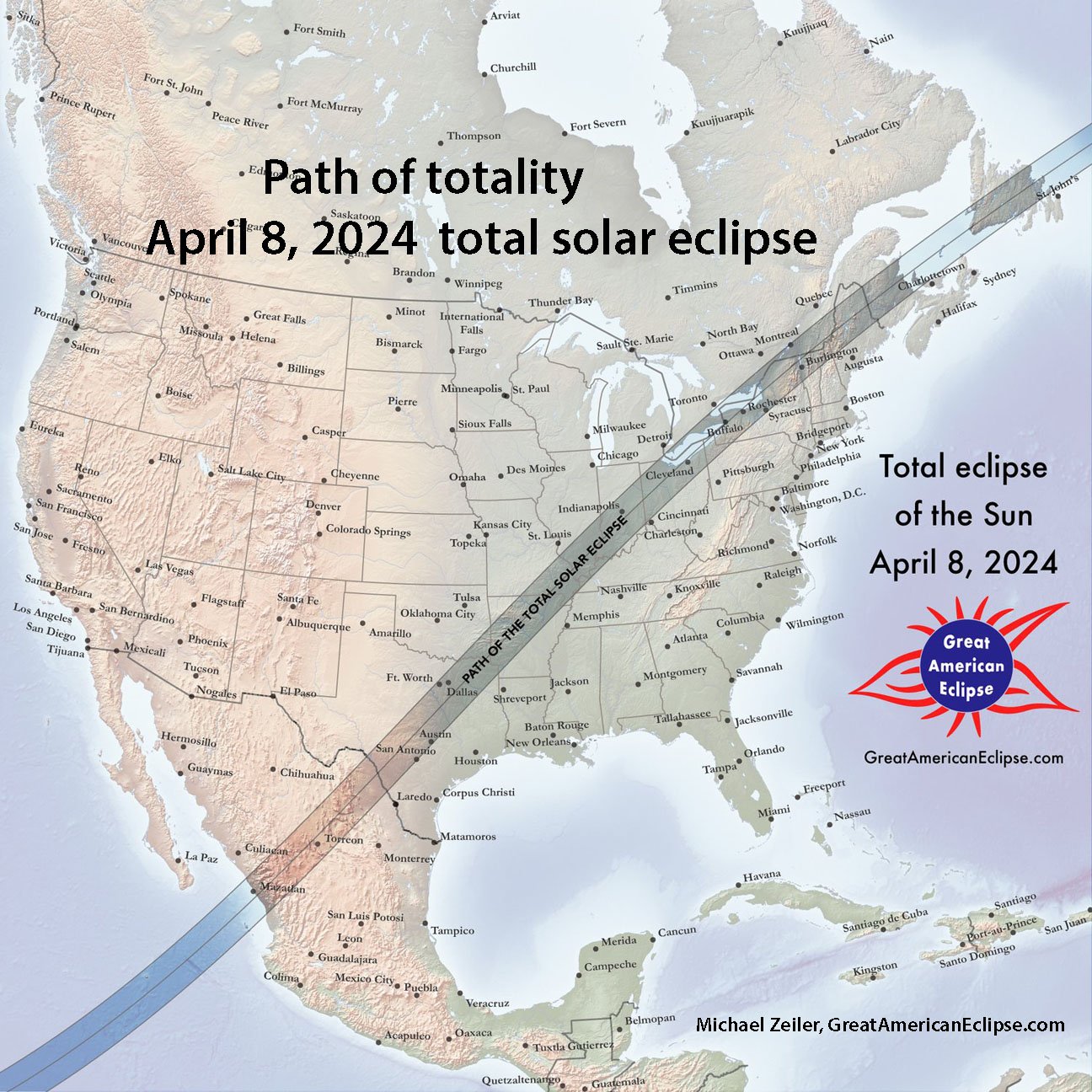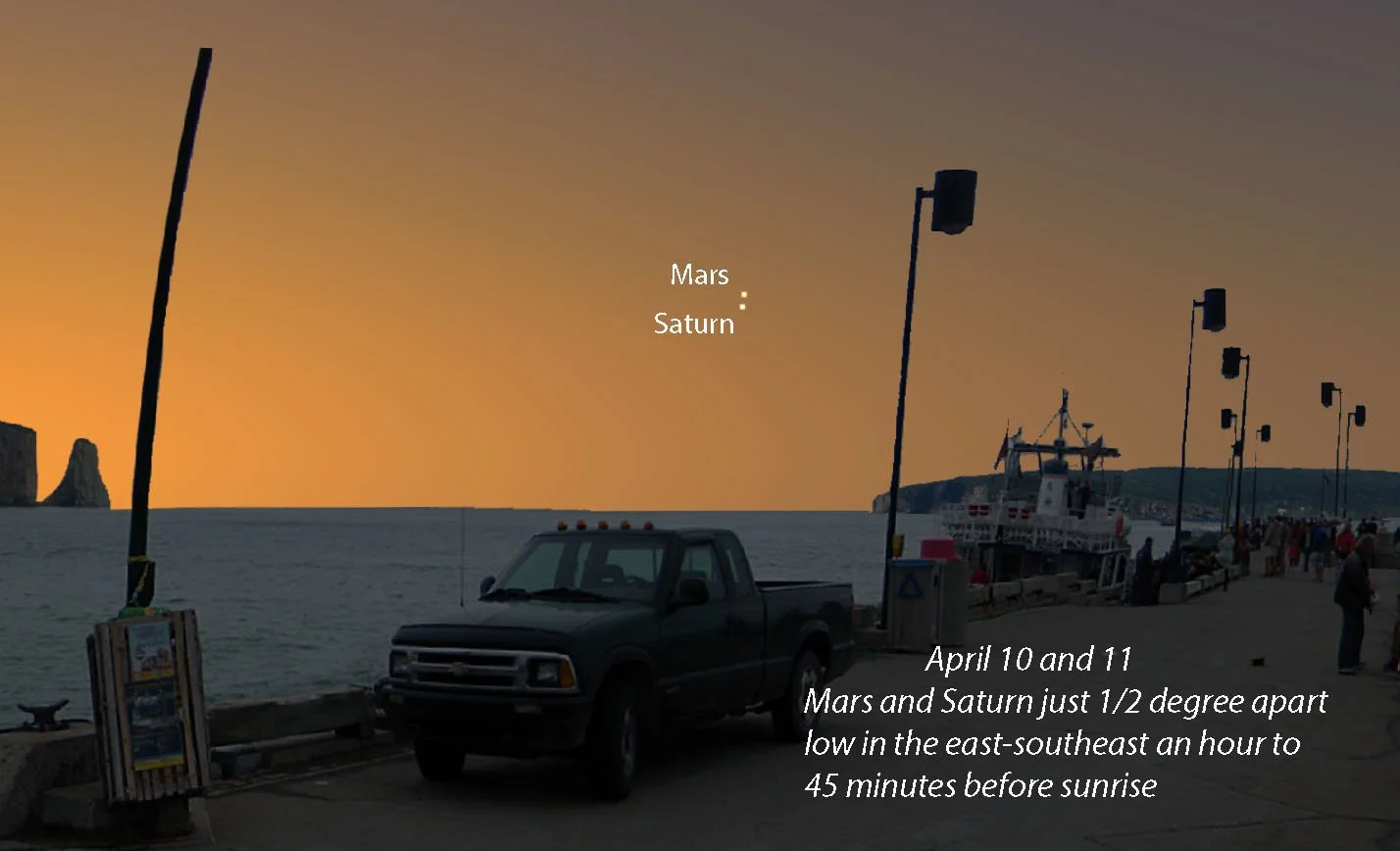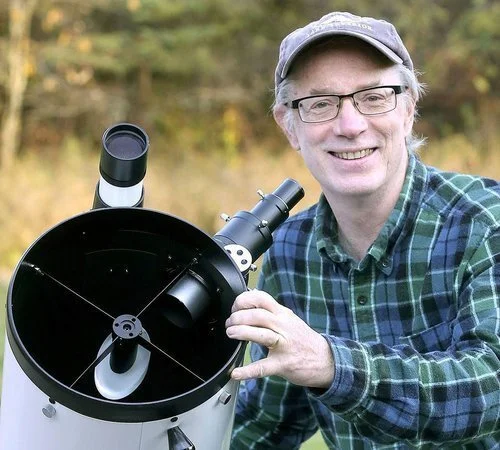April 2024 Night Sky Calendar
The winter spangle of bright luminaries is tipping to the west, replaced by a more modest crew of spring stars — Leo the Lion, standing high in the southern sky around 9:30 p.m. local time at mid-month; Hydra the Water Snake, the biggest of the 88 constellations; Boötes the Herdsman with its flashing, ruby-like star Arcturus, and the distinctive trapezoidal figure of Corvus the Crow.
April Constellations - South
Download the free Stellarium Mobile app for Android and iPhone to help you find these constellations and many others. Just do a Google search then install the app, set it in night mode (red screen) and point your phone skyward.
There are two excellent close conjunctions this month involving Mars and more distant planets. Jupiter lingers in the western sky, visible at dusk and early nightfall until it disappears in the twilight glow at month’s end. Thereafter, the evening sky will be absent any bright, easily-findable planets until Saturn rises before midnight in early July.
The April 8 total solar eclipse is the month’s most anticipated event. Some of you have already made plans to travel to the path of totality, where the moon will cover sun for up to 4 ½ minutes. Total eclipse will only occur along a narrow, approximately 115-mile-wide swath extending from Mexico, through Texas northeast to Maine and the Canadian Maritime provinces.
Those not in the path, which includes most of North and Central America, will witness a partial eclipse. Where I live in Duluth, Minnesota, the moon will cover 71 percent of the sun at maximum at 2:05 p.m. CDT.
Events (a.m. indicates the event happens in the early morning sky):
April 1 – Last quarter moon. Rises about 1 a.m. local time and stands due south around sunrise.
April 6 (a.m.) – Very thin lunar crescent triples up with Mars and Saturn low in the eastern sky at dawn. Bring binoculars!
April 1-15 – Best and last time to spot Comet 12P/Pons-Brooks before bright evening twilight gobbles it up. Although the comet will be low in the western sky it passes near Jupiter, making it relatively easy to find. It should reach 4th magnitude and be visible in ordinary binoculars. I’ll post a finder map at facebook.com/astrobobking at the start of the month.
Path of totality - April 8, 2024
April 8 – New moon, total solar eclipse. To find eclipse times for your location go to timeanddate.com/eclipse/map/2024-april-8. Zoom into the map, spot your city and click it. You’ll also see what percentage of the sun will be covered, called obscuration.
April 10 and 11 (a.m.) Saturn slides under Mars in a very close conjunction. On both mornings the two planets will be just a half- degree apart! Look low in the east about an hour before sunrise. Binoculars will make for a clearer, brighter view.
April 10 – Thin crescent moon shines above Jupiter and below the Pleiades in the western sky at nightfall.
April 14 – Thick crescent moon hangs directly below and equidistant from Gemini’s brightest stars, Pollux (above and left of the moon) and Castor (above and to its right).
April 15 – First quarter moon. Stands nearly due south at sunset and sets around 1 a.m. local time.
April 22 – Nearly full moon shines very close to Virgo’s brightest star Spica — only about a half-degree to its left.
April 23 – Full Pink Moon, named for the early spring wildflower moss pink. To see the moonrise, check your local rising time at timeanddate.com/moon
April 29 (a.m.) – Rare opportunity to spot Mars in a small telescope and see Neptune at the same time. The two will be only a fifth of a degree apart in twilight. I’ll post a chart at facebook.com/astrobobking to help you identify Neptune as we get closer to the date.
Bob King is an amateur astronomer, author, and passionate educator. He served as a photographer and photo editor at the Duluth News Tribune for 39 years and taught at the UMD planetarium. Bob’s work had a great impact on Voyageurs National Park. To achieve International Dark Sky Park certification, the park was required to host dark sky education events. Through the Night Sky Explorer webinars, the Conservancy was able to fulfill this component and help secure the certification for Voyageurs National Park. We can’t thank Bob King enough for sharing his talents and knowledge with the Conservancy community to support dark sky preservation.





